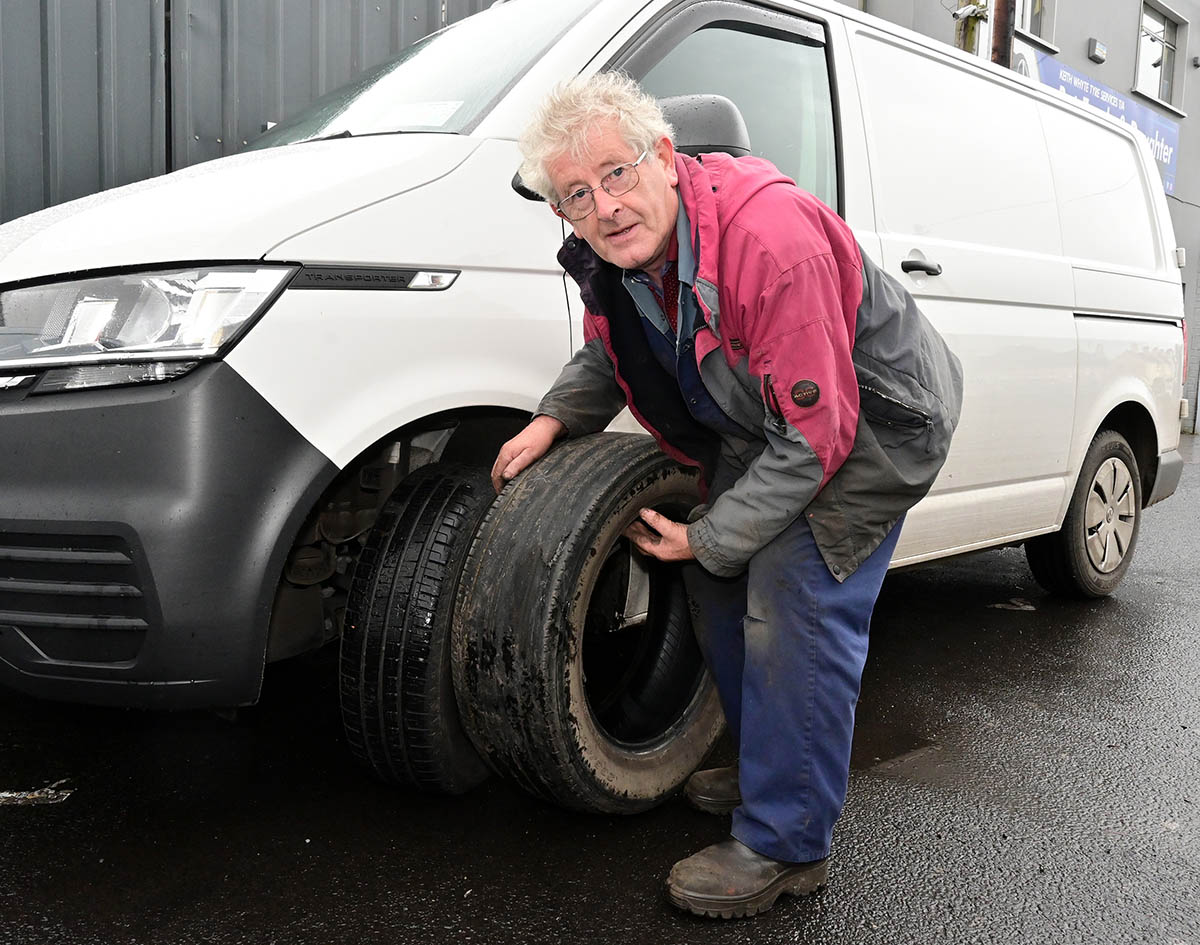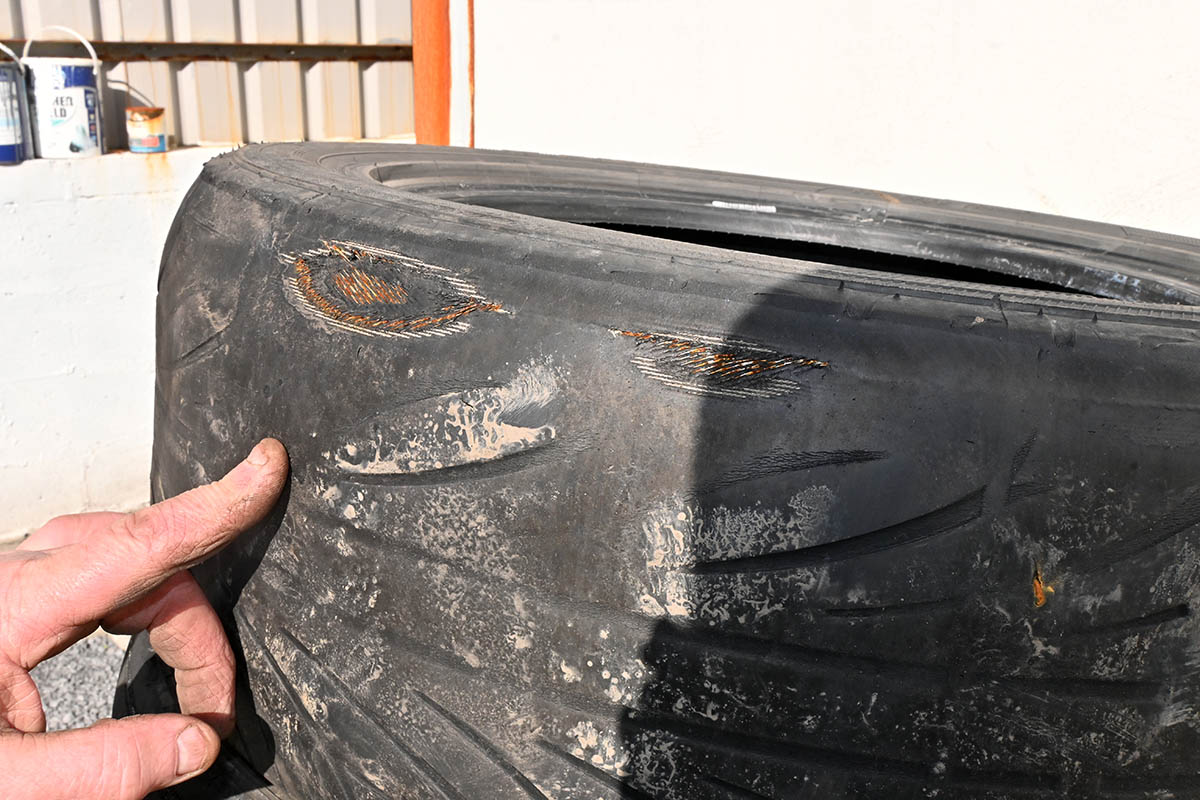As Road Safety Week comes upon us again this week, a recent survey highlighted that nearly one in three drivers don’t check their tyres more often than every six month, with 21% not checking the tyres’ tread depth.
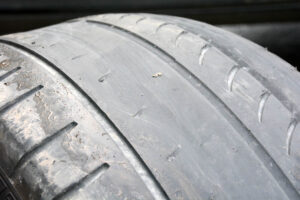 Tyre Safety Day was this Monday but given the state of the nation’s tyres maybe every Monday should be Tyre Safety Day. In the same survey, six percent of drivers admitted to never checking their tyres and when you see some of the rubber coming off cars when they eventually wear down, that’s not at all surprising.
Tyre Safety Day was this Monday but given the state of the nation’s tyres maybe every Monday should be Tyre Safety Day. In the same survey, six percent of drivers admitted to never checking their tyres and when you see some of the rubber coming off cars when they eventually wear down, that’s not at all surprising.
In an effort to educate the next generation of drivers, Pat Foudy, who recently retired after a lifetime of selling tyres at his premises in Ennis, is going into schools all around Clare to demonstrate to TY and 5th year students the dangers of worn tyres. I joined him last week as he talked at Ennis Community College.
Pat and John Galvin visit Ennis Community College.
While giving his talk about when and how to check tyres, he shows some of the worst examples that have recently come off cars driving on our roads. So far, he has visited schools all across the county and has talked with over 400 students.
There’s a tyre at the legal tread depth of 1.6mm, and while a tyre with this tread depth may be technically legal, it’s in no way safe, having given up the vast majority of its wet grip in the intervening kilometres.
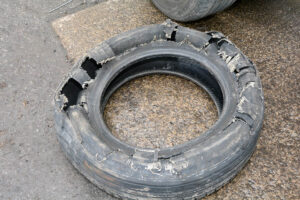 Many drivers continue to drive on tyres that have reached the legal limit and the result is a completely bald tyre with no tread pattern whatsoever and worse, a tyre may become so worn that the carcass of the tyre comes through and at that stage, the tyre is just a blowout waiting to happen.
Many drivers continue to drive on tyres that have reached the legal limit and the result is a completely bald tyre with no tread pattern whatsoever and worse, a tyre may become so worn that the carcass of the tyre comes through and at that stage, the tyre is just a blowout waiting to happen.
When a tyre blows out, it deflates instantly, resulting in loss of control, which will almost certainly result in an accident.
According to Tom Dennigan of Continental Tyres Ireland: “Our regular road safety surveys always show a low level of attention for tyre safety among Irish motorists, but this recent survey is particularly worrying given how road safety has been right at the top of the media agenda over the past few months. Tyres have such a crucial impact on road safety as, not only are they the vehicle’s only contact with the road surface, but they also govern a vehicle’s stopping ability in an emergency.”
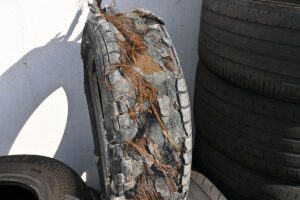 A new tyre comes with around 8mm of tread depth and this is the only channel the tyre has to move water out of the way, allowing the tyre to grip the road. Once a tyre reaches 3mm the grip and braking ability of the tyres is severely compromised and this is the time to change them, not waiting for them to reach the woefully inadequate 1.6mm limit.
A new tyre comes with around 8mm of tread depth and this is the only channel the tyre has to move water out of the way, allowing the tyre to grip the road. Once a tyre reaches 3mm the grip and braking ability of the tyres is severely compromised and this is the time to change them, not waiting for them to reach the woefully inadequate 1.6mm limit.
Also bear in mind that bad tyres could leave you open to a fine of €80 and up to four penalty points.
Even more important is to consider the affect bad tyres have on your car, particularly its braking distance. Under controlled conditions, a tyre at the legal limit can take up to 43m to stop, double the distance for a new tyre and that could mean the difference between life and death.
You should regularly check your tyre’s tread depth and pressure, not forgetting the spare wheel, if fitted. While doing that, check for cuts, bumps or uneven tyre wear.
Pat Foudy shows how to check your tyres across the tread width.
A useful tip from Pat is to check for uneven tyre wear across the treads by turning the front wheels on full lock left and right in order to be able to see easily right across the tyre. Of course, this trick doesn’t work for the rear wheels, so you’ll just have to bend down for that.
John Galvin talks about what all the numbers mean on the side of a tyre.
You can check the depth of your tyres very easily with a one euro coin. The gold band on the front face of the coin (beside the large No 1 and map of Europe) is 3mm wide, so by inserting the coin into the centre grooves of the tyre, you will be able to see how much tread is left on the tyre.


